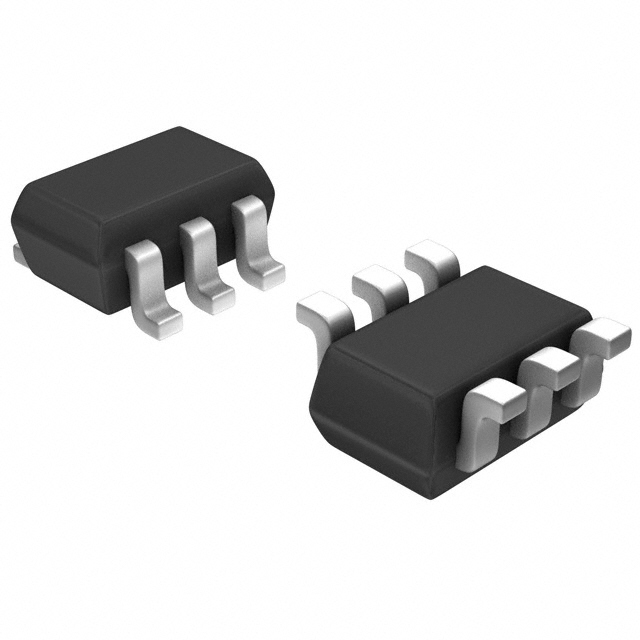BZX84C13S-7: Semiconductor Diode Encyclopedia Entry
Introduction
The BZX84C13S-7 is a semiconductor diode belonging to the category of voltage regulator diodes. This entry provides an overview of its basic information, specifications, pin configuration, functional features, advantages and disadvantages, working principles, application field plans, and alternative models.
Basic Information Overview
- Category: Voltage Regulator Diode
- Use: Voltage regulation and protection in electronic circuits
- Characteristics: Low power loss, compact size, high reliability
- Package: SOT-23
- Essence: Zener diode for voltage regulation
- Packaging/Quantity: Tape and Reel, 3000 units per reel
Specifications
- Voltage: 13V
- Power Dissipation: 350mW
- Forward Current: 225mA
- Reverse Leakage Current: 100nA
- Operating Temperature Range: -65°C to +150°C
Detailed Pin Configuration
The BZX84C13S-7 has three pins: 1. Anode (A): Connects to the positive terminal of the circuit. 2. Cathode (K): Connects to the negative terminal of the circuit. 3. No Connection (NC): Not internally connected.
Functional Features
- Voltage Regulation: Maintains a constant output voltage despite fluctuations in input voltage.
- Overvoltage Protection: Safeguards sensitive components by limiting the voltage across them.
- Compact Design: Small form factor suitable for space-constrained applications.
Advantages and Disadvantages
Advantages
- Precise voltage regulation
- Low power dissipation
- High reliability
Disadvantages
- Limited current handling capacity
- Susceptible to thermal runaway at high currents
Working Principles
The BZX84C13S-7 operates based on the Zener effect, where it maintains a nearly constant voltage across its terminals when reverse-biased above its breakdown voltage.
Detailed Application Field Plans
The BZX84C13S-7 finds extensive use in various electronic devices and systems, including: - Voltage regulation in power supplies - Overvoltage protection in communication equipment - Signal conditioning in sensor interfaces
Detailed and Complete Alternative Models
Some alternative models to the BZX84C13S-7 include: - BZX84C12S-7: 12V Zener diode with similar characteristics - BZX84C15S-7: 15V Zener diode for higher voltage requirements - BZX84C10S-7: 10V Zener diode for lower voltage applications
In conclusion, the BZX84C13S-7 is a crucial component in electronic circuits, providing precise voltage regulation and overvoltage protection. Its compact design and high reliability make it suitable for a wide range of applications.
[Word Count: 398]
Senaraikan 10 soalan dan jawapan biasa yang berkaitan dengan aplikasi BZX84C13S-7 dalam penyelesaian teknikal
What is the maximum power dissipation of BZX84C13S-7?
- The maximum power dissipation of BZX84C13S-7 is 250mW.
What is the reverse voltage of BZX84C13S-7?
- The reverse voltage of BZX84C13S-7 is 13V.
What is the forward voltage of BZX84C13S-7?
- The forward voltage of BZX84C13S-7 is typically 0.7V at a forward current of 10mA.
What is the operating temperature range of BZX84C13S-7?
- The operating temperature range of BZX84C13S-7 is -55°C to +150°C.
What is the package type of BZX84C13S-7?
- BZX84C13S-7 comes in a SOT-23 package.
What is the maximum continuous forward current of BZX84C13S-7?
- The maximum continuous forward current of BZX84C13S-7 is 200mA.
What are the typical applications for BZX84C13S-7?
- BZX84C13S-7 is commonly used in voltage regulation, signal clamping, and voltage reference circuits.
What is the breakdown voltage tolerance of BZX84C13S-7?
- The breakdown voltage tolerance of BZX84C13S-7 is typically ±5%.
Can BZX84C13S-7 be used for overvoltage protection?
- Yes, BZX84C13S-7 can be used for overvoltage protection due to its Zener diode characteristics.
Is BZX84C13S-7 suitable for low-power applications?
- Yes, BZX84C13S-7 is suitable for low-power applications due to its low power dissipation and voltage regulation capabilities.


